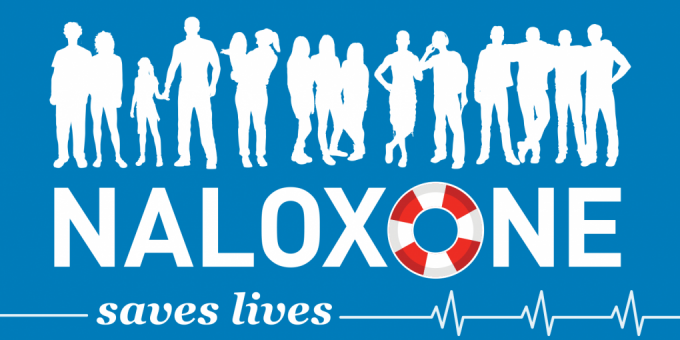
(UNDATED) – Anyone can save a life during an opioid overdose with naloxone, a front-line defense in the nation’s opioid crisis. Naloxone is a life-saving drug that, when sprayed into the nose or injected, quickly reverses the powerful effects of opioids during an overdose.
Everyone who overdoses with opioids, whether it is with a prescribed medicine or an illicit drug, needs naloxone. Examples of opioids include heroin, fentanyl, oxycodone, hydrocodone, codeine, and morphine. Because overdoses can happen anywhere, naloxone is designed to be used by anyone, even a bystander. That’s one of many reasons the U.S. Food and Drug Administration (FDA) is working to help increase access to naloxone in case of such an emergency.
“With naloxone, anyone can help save the life of someone who’s having an opioid overdose,” said Dr. Douglas C. Throckmorton, MD, Deputy Director for Regulatory Programs at the FDA’s Center for Drug Evaluation and Research. “We want everyone who may witness an opioid overdose – family members, friends, neighbors, and others close to people who use opioids – to have access to naloxone and to feel confident using it during an emergency. Without naloxone, the risk of an overdose being fatal is significant.”
To help achieve this goal, there are three FDA-approved forms of naloxone available to consumers: injectable, auto-injector, and nasal spray. All three forms are easy to use and can save lives.
“Naloxone should be available to everyone who might be taking opioids or who are around people who are taking opioids,” Throckmorton said. The medicine is safe, not addictive, and very effective, he added.
Expanding the Availability of Naloxone
Although naloxone is a prescription medicine, many states allow consumers to get naloxone directly from a pharmacist, without an individual prescription, by putting a “standing order” in place. This allows access to naloxone to anyone who thinks they might need it, either for themselves or for someone else who might be at risk for an overdose.
A standing order takes the place of a prescription from a health care provider, and it’s another way that states are expanding the availability of naloxone.
“This valuable effort has made a difference in many communities,” Throckmorton said.
Recognizing an Opioid Overdose and Using Naloxone
Everyone, including teenagers, should be able to recognize the signs of an opioid overdose and administer naloxone, he added. An opioid overdose usually involves unconsciousness and shallow breathing. Other signs of an overdose may include:
- unresponsiveness (doesn’t wake up when shaken or called)
- limpness
- blue lips, gums or fingertips
- slow or irregular heartbeat or pulse
- small pupils
Seeing someone overdose on opioids can be very stressful, especially for people who are not trained for this kind of emergency. The FDA has taken that scenario into account when approving the different forms of naloxone.
“We have tested various forms of naloxone and know that they can be used in the heat of the moment, when people are stressed and flustered,” Throckmorton said.
Anyone can use this medicine, and the various forms of naloxone come with instructions to guide users. The auto-injector, for instance, has a voice that will talk you through each step of the injection, including how to find the right place to inject the naloxone, how long to hold the injector in place, and a reminder to call 911 for emergency medical attention.
Naloxone is very powerful and works quickly. Someone having an overdose will usually wake up within one to three minutes of receiving naloxone. When used quickly after an overdose, naloxone also reduces the likelihood of long-term brain damage from reduced blood flow.
“When you have an opioid overdose, your breathing stops. Naloxone reverses that and gives you a chance to get treatment,” Throckmorton said.
But naloxone is a temporary treatment, and its effects do not last long. After calling 911, stay with the patient, even if they are conscious, until emergency medical help arrives. The patient could lapse back into unconsciousness or might need another dose of naloxone. Keep trying to wake them up and keep them breathing. “Until help arrives, you’re their best hope,” he said.
Naloxone Will Not Harm Someone Who Does Not Have Opioids in Their System
“What if you’re not sure it’s an opioid overdose? Don’t hesitate in an emergency,” Throckmorton said. “Giving someone naloxone won’t hurt them, but it could save their life.”
Naloxone works in the brain only at the opioid receptor, binding to the receptors and blocking the opioids and the effects of opioids. If someone is having a different medical emergency – such as a diabetic coma or cardiac arrest – and you give them naloxone, the drug won’t have any effect or harm them.
There are no age restrictions on the use of naloxone; it can be used for suspected overdose in infants and children through elderly people.
Discuss Naloxone When Getting a Prescription for Opioids
Opioids drugs are used to treat certain kinds of pain. They are also used to treat people with opioid use disorder. Because they are powerful medicines, it’s important that patients and their health care providers discuss their use and whether naloxone is needed whenever opioids are prescribed. After that conversation, if naloxone is right for you, be prepared and have naloxone handy.
“We also want naloxone in the hands of people who are likely to witness an opioid overdose – the friends and family members of people taking opioids,” Throckmorton said. Naloxone has saved thousands of lives, and it could save even more as more people know about it and have access to it.
“To help achieve this, we at the FDA are working to encourage and help manufacturers develop new naloxone products, including non-prescription, or over-the-counter, naloxone,” he added.



